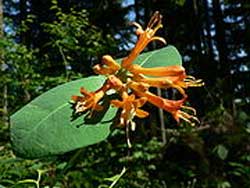Many self-reliant people rely on natural treatments and remedies whenever possible. While there are hundreds of recognized medicinal herbs and plants, many grow only in a specific area or require extensive preparation before using. The following seven plants are commonly found all over the United States. They are simple to prepare and use and, most importantly, are effective.
In primitive circumstances, medicinal plants are usually utilized in three ways: as a tea, a poultice, or raw. When preparing a tea, the part of the plant to be used is gently simmered in water over low flame to release its active ingredients. If the tea is to be ingested, adding honey or other flavorings will make it more palatable.
When preparing a poultice, soak the leaves in a small amount of hot water. While still warm, apply the leaves directly to the affected area and cover with a clean cloth. Change the poultice several times.
When using the plant raw, if possible rinse the leaves to remove any dust or debris. Bruising the leaves before using them will aid in releasing the active ingredients.
One very important consideration: Unless you are positive of the plant’s identity, do not eat it or use it! A botanical field guide is an excellent source to use when identifying plants in the wild if you are in question of a plant’s identity.
 |
Amaranth
“Amaranthus retroflexus” (or pig weed), is a common plant which grows nearly everywhere. It is found in fields, vacant lots, meadows, and even in some gardens and lawns. It grows from two to three feet tall with the root and lower part of the stalk being a reddish color. The leaves are green with purple on the under side.
The leaves of amaranth are used for their astringent properties in treating cuts or scrapes. When applied as a poultice, they promote healing and reduce the chance of infection. When taken internally as a tea, amaranth leaves reduce the discomfort of diarrhea.
|
 |
Comfrey
“Symphtum officinale,” is a large plant which grows in a clump, often reaching three feet in height.
It has wide, light green leaves which have a “fuzzy” appearance on the underside. Comfrey is usually a cultivated plant, but due to its invasive growing habits, have naturalized and now grows wild in many areas.
Comfrey is an excellent cell proliferator which helps the body repair tissue damaged by injury, cuts, or over-exertion. Use as a poultice on wounds, bruises, and sprains. Comfrey leaves can also be used raw by placing them directly on the injured area and wrapping with a bandage to hold them in place.
I can personally attest to the effectiveness of comfrey. I have used it on both “two and four-legged animals” as a treatment for cuts and lacerations.
|
 |
Elder
“Sambucus caprifoliaceae,” is a tall growing shrub, usually found along rivers and creeks throughout the United States. While the berries can be eaten raw or processed into jams or juice, the flowers and leaves are used for healing purposes. The tiny, white flowers, which grow in flat clusters, are made into an ingested tea. It is used for all sorts of phlegm-associated ailments and also to reduce fever and aches associated with colds. The leaves can be made into a tea and used to cleanse abrasions and wounds, or used as a poultice.
|
 |
Honeysuckle
“Lonicera japonica,” is a commonly found plant which grows as a vine, often reaching 50 feet in height. It grows wild as well as cultivated. It has tubular flowers which grow in clusters on the tips of the branches. The flowers can be either red or orange and yellow, depending on the species. Use the flowers as a treatment for feverish colds and flu in the form of an ingested tea.
|
 |
Mallow
“Malva parviflora,” also known as cheese weed, is another plant commonly found in “weed patches.” It grows to three feet tall and has roundish, cupped leaves. The flowers grow along the branches with the fruit developing from the flowers.
A tea is made from its leaves and gargled as a sore throat remedy.
|
 |
Plantain
“Platago major” and “Platago lanceolata,” is usually considered a weed. It is found in all parts of the United States. The leaves grow from a base and are usually six to eight inches long. The seed stalks also spike from the base and reach a height of twelve inches.
The cooked leaves of plantain are used as a poultice to relieve pain and itching from bee stings and insect bites. They also have antiseptic properties and can be used to cleanse wounds and abrasions. This is another plant I can verify the effectiveness of. |
 |
Yarrow
“Achillea millefolium,” grows to two and half feet tall and is covered with soft hairs. Its fluffy appearance belies its strong odor. It blooms with small white flowers in a flat cluster. Yarrow is usually found in partially wooded areas or along the edges of forests.
Press the leaves into a wound to stop bleeding and help alleviate the pain. A leaf inserted in the nostrils will help to stop a nosebleed as well. |
Additional Research:






